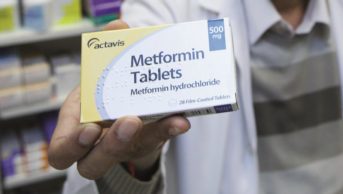
istockphoto.com
Pharmacists and pharmacy technicians in all community pharmacies in England will be given access to part of the patient records held by GPs, as part of a £7.5m roll-out from autumn 2015. Each summary care record (SCR) provides a selection of information about a patient’s treatment, including his or her prescribed medicines, any allergies and contraindications.
This is a welcome
development, one that the Royal Pharmaceutical Society (RPS), as the professional body for pharmacists in Great Britain, and other pharmacy organisations have lobbied to secure. Now, pharmacy must make good use of opportunities the system will offer to improve patient care.
More than 96% of people in England have an SCR, according to the Health and Social Care Information Centre (HSCI
C), the quango that will f
acilitate the community pharmacy implementation in partnership with NHS England.
Patients will be able to grant pharmacists and pharmacy technicians permission to view their SCR to confirm information held by the GP that is relevant to their care. At the moment, pharmacists usually need to telephone GP surgeries to corroborate details of patients’ medicines that are readily available in the SCR; often this involves trusting the information provided by receptionists with no clinical qualification. Arguably this accepted activity represents a risk to patient safety.
Better integration of health and care services is at the centre of NHS England’s 2014 strategy document for improving and sustaining the NHS in England: the ‘Five year forward view’. The decision to roll out SCR access to pharmacies recognises that pharmacy can offer a better service to patients with access to some of the basic information contained within SCRs. The scheme will also avoid duplication of effort and reliance on paper and word of mouth — since UK politicians have long touted the vision of an NHS connected and empowered by information technology (IT).
It is well known that governments struggle with big IT projects. Work to create SCRs began in 2007 as one part of the ‘National programme for IT’, an ambitious plan that was set to integrate data systems across the NHS in England. Extending SCR access to community pharmacy was mooted early in 2009; it was initially designed for use in emergency care settings. This came to a disappointing halt at the beginning of 2011 when a community pharmacy pilot scheme was scrapped. By September 2011, the ‘National programme for IT’ was itself wound up, after failing to deliver on its overall objectives despite costing more than £10bn in public money.
The SCR might be considered one of the programme’s successes, but its full potential has not yet been realised.
Opportunities for improvement
Community pharmacy access to SCRs was trialled by the HSCIC between September 2014 and March 2015. According to a report from the HSCIC published in June 2015, 140 pharmacies in West Yorkshire, Sheffield, North Derbyshire, Northamptonshire and Somerset took part and around 1,900 records were accessed during the ‘proof of concept’ project.
Pharmacies should only access SCRs when there is a clinical need. Indeed, the HSCIC says there is no expectation that every patient receiving a pharmacy service should have their SCR viewed. Nevertheless, pharmacies accessed SCRs less often than the HSCIC thought they would; the average use over the six-month trial was 2.9 views per pharmacy per month, compared with an expected 4.0 views per week.
The underwhelming response has not put the HSCIC off a full roll-out. It suggests that some pharmacies may have misinterpreted the scope of SCRs as being only for emergencies or for use out of hours. In fact, the data show higher rates of access out of hours; 26% of all SCR views took place at weekends, whereas only 13% of community pharmacy consultations take place then.
Rather than storing up a list of queries to address with multiple GP surgeries come Monday morning, the pharmacist or pharmacy technician can deal with many of those on the spot. This should result in safer and quicker decision-making in the evenings and at weekends, which may avoid unnecessary contact with GP surgeries and can only be more convenient for patients.
Go ahead
Patient consent is a central tenet of the SCR system. Registered pharmacy professionals must be trusted to view this information in the course of their work but only when there is clinical need — known as a ‘legitimate relationship’. And a patient must give explicit consent; that means the pharmacist asking a patient for permission to view (PTV) the SCR on each and every occasion.
Effective governance is essential. Everything that a pharmacist or pharmacy technician does within the SCR system leaves a digital footprint that is audited and available to the patient upon request, which should offer some assurance.
The HSCIC identified no improper access during the trial, but reported that the practicalities of obtaining PTV in the pharmacy caused confusion and uncertainty that may have hindered uptake of the SCR. This must be addressed. Clinicians should not be reluctant to seek consent, nor to access the SCR when it may aid a clinical decision.
The RPS is calling for NHS England to give all pharmacists full read-and-write access to GPs’ patient health records. SCR access is a first step that pharmacists must embrace enthusiastically. By the time the SCR roll-out is complete in autumn 2017, community pharmacy should have built a strong case for even greater access.


